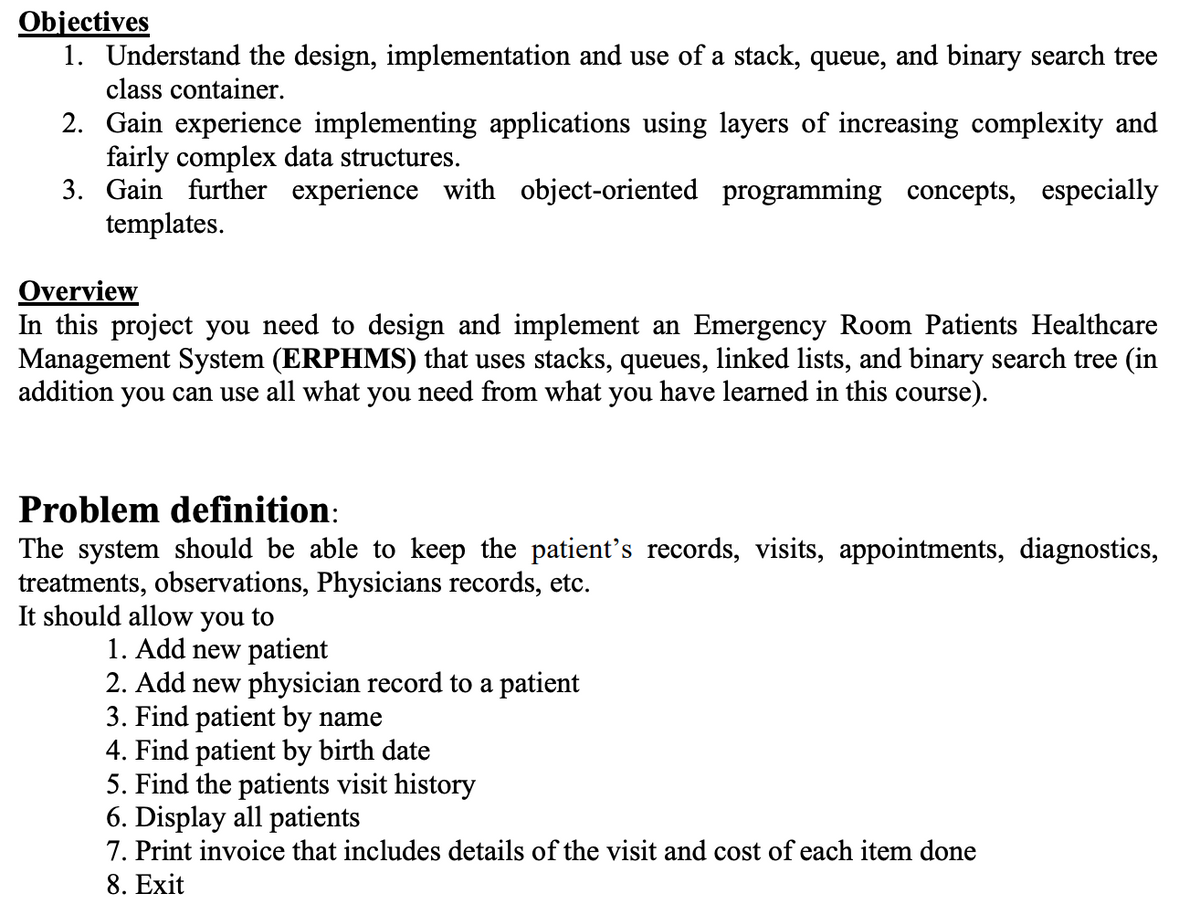Can someone help me complete what the image is asking using the code below as reference(You can change it a bit if you want) also using stacks, queues, linked lists, and Binary Search Trees. #include using namespace::std; class ERPHMS{ private: int patient; int visits; int turns; int diagnostics; int treatments; int observation; public: void add_patient(); void new_physician_history(); void find_patient(); void find_pyhsician(); void patient_history(); void patient_registered(); void display_invoice(); }; int main() { ERPHMS check; int choice; cout<>choice; switch(choice) { case 1: check.add_patient(); break; case 2: check.new_physician_history(); case 3: check.find_patient(); case 4: check.find_pyhsician(); case 5: check.patient_history(); case 6: check.patient_registered(); case 7: check.display_invoice(); } }
Can someone help me complete what the image is asking using the code below as reference(You can change it a bit if you want) also using stacks, queues, linked lists, and Binary Search Trees.
#include<iostream>
using namespace::std;
class ERPHMS{
private:
int patient;
int visits; int turns;
int diagnostics;
int treatments;
int observation;
public:
void add_patient();
void new_physician_history();
void find_patient();
void find_pyhsician();
void patient_history();
void patient_registered();
void display_invoice();
};
int main() {
ERPHMS check; int choice;
cout<<endl<<"----------------------------------------------------------"<<endl; cout<<"This is an Emergency Room Patients Health Managment system "<<endl; cout<<"-----------------------------------------------------------"<<endl;
cout<<"1:For adding patient select"<<endl;
cout<<"2:For new physician History"<<endl;
cout<<"3:For finding patient"<<endl;
cout<<"4:For finding physician"<<endl;
cout<<"5:For patient History"<<endl;
cout<<"6:For patient registered"<<endl;
cout<<"7:To display Invoice"<<endl<<endl;
cout<<"Please pick the service : ";
cin>>choice;
switch(choice) {
case 1: check.add_patient(); break;
case 2: check.new_physician_history();
case 3: check.find_patient();
case 4: check.find_pyhsician();
case 5: check.patient_history();
case 6: check.patient_registered();
case 7: check.display_invoice();
}
}

Step by step
Solved in 2 steps









